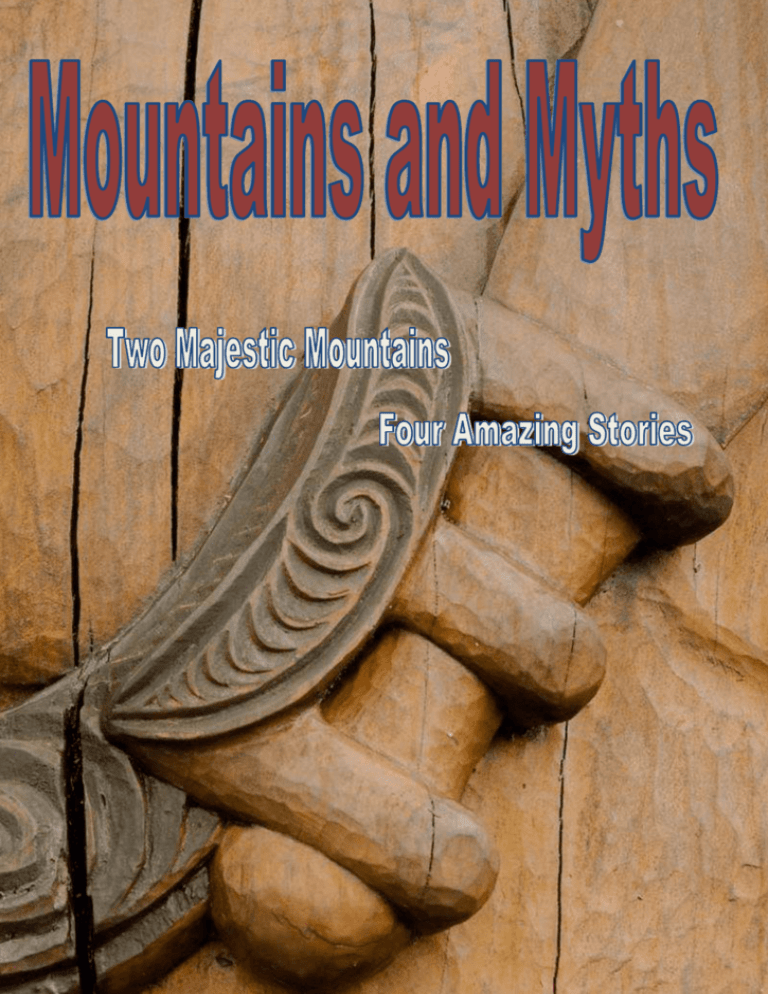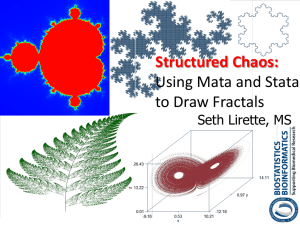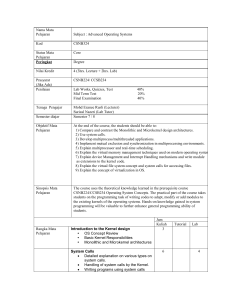word legends - JOIDES Resolution
advertisement

Standing nearly 400 meters tall in the heart of Hawke’s Bay, Te Mata Peak is a landmark for tourists and climbers. It is part of a group of hills that look rather like a sleeping person. But, what caused this strange shaped mountain to be where it is, and why does it look so distinctive? There are two histories of one amazing mountain. One tells of a heartbroken giant, the other of millions of years of weather and earthquakes. Both are fascinating! The Legend of Te Mata Peak Many years ago, there was a giant called Te Mata O Rongokako. He was the leader of the Waimarama tribe and was big, strong and powerful. He would climb across the hills around Hawke’s Bay and attack the pa (village) of the Heretaunga tribe, burning their houses and stealing their food. The chief of the Heretaunga tribe was angry, but his warriors were too small to fight the giant, so he thought of a plan. He would send his daughter Hinerakau to fall in love with Te Mata O Rongokako, so he would be nice to her tribe. Hinerakau was nervous, but she agreed. The plan succeeded, and Te Mata O Rongokako fell deeply in love with Hinerakau, and she fell in love with him. The couple wished to be married, but the people of Heretaunga were angry. They still remembered how the giant ruined their pa, and hadn’t forgiven him. The chief listened to his tribe, but still wanted peace between his pa and the giant. So he agreed to the marriage, as long as Te Mata O Rongokako proved his love by completing a series of tasks. The last task was to bite through the hills between Waimarama and Heretaunga. Wanting to marry Hinerakau, the giant agreed. He leapt onto the hills and began to bite. He chewed and he ate and filled his mouth with soil but the soil and rock stuck. Te Mata O Rongokako tried to swallow but he couldn’t breathe so he laid down and died. Te Mata O Rongokako died trying to prove his love to Hinerakau, and the shape of the hills mark the shape of the ‘sleeping giant’. The tallest hill is called Te Mata, after the giant himself. Te Mata: The Geology The legend of Te Mata Peak was passed down from generation to generation. It is still told today, although we now know the geological history of the hills. It doesn’t involve giants and warriors, but is still very awe inspiring! Millions of years ago there was no such thing as Te Mata Peak. There was, however, a shallow, warm sea around what would become Hawke’s Bay. Many small animals lived in this sea with hard shells like crabs and coral. When these animals died their bodies made limestone, a hard kind of rock. New Zealand is part of the ‘Pacific Ring of Fire’, a chain of volcanoes and fault lines that runs around the Pacific Ocean. Lots of earthquakes happen in the ‘ring of fire,’ and around four million years ago, one of these pushed the limestone and mudstone of Te Mata Peak up out of the sea, along with lots of flat land that used to be part of the sea floor. Now we have some hills, but how did they come to look like a sleeping giant? Millions of years of rain eroded (washed away over time) the softer rock, leaving the harder, stronger limestone, which just happened to look like a large person lying down! New Land, New Legend In mountainous Alaska lies Mount Susitna, ‘The Sleeping Lady’. Like Te Mata Peak it looks like a resting giant. The legend of Mount Susitna also involves warring giants and a tragic ending. The geology of Mount Susitna is every bit as fascinating as New Zealand’s ‘Sleeping Giant’. The Legend of Mount Susitna Thousands of years ago, Alaska was known as ‘The Great Land’. Living in The Great Land was a clan of gentle giants. Two giants, a beautiful lady and a handsome man, fell deeply in love and planned to be married. The entire village was happy for them, and plans for a wedding were underway. The day before the wedding a terrified messenger brought grave news, the warlike giants from the north were invading, and destroying everything in their path. The wedding was postponed as the clan decided what to do. The love struck warrior suggested that he lead a small group of men out with gifts to meet the invaders and make peace with them. The others agreed and in the morning the volunteers left the village. The young lady did not want her future husband to leave, but she knew that they had no choice. She waited for him to come back for many days and nights until she fell into a deep sleep. While she was asleep, the other villagers were told that the volunteers had failed to make peace and a war had broken out, and the young lady’s husband had been killed. No one dared to wake her, and she sleeps to this day, waiting for peace to return. Mount Susitna: The Geology Like Te Mata Peak, Mount Susitna was formed millions of years ago. Most of it’s rock comes from the Mesozoic Era, the time of the dinosaurs! Most of the mountain is made of granodiorite and quartz monzonite. It’s peaks were given those rounded, teardrop shapes around two to seven million years ago by glaciers cutting through the mountain. The glaciers receded with the end of the last ice age thousands of years ago, but the cuts remain. These cuts make the mountain look like a sleeping giant. Picture: An Alaskan Glacier This is where you come in! Your task isn’t as hard as Te Mata O Rongokako’s (You won’t have to bite through any hillsides!) or take as long as The Sleeping Lady’s wait, but it will be fun and a bit challenging! You get to make a poster about the two mountains and their legends. You can focus on the geology or the legends of the mountains, and compare both Te Mata Peak and Mount Susitna, or write about the legend and geology of one mountain. There are so many things you can do! Below are some ideas. You can use one of them or make your own! How are the legends of Te Mata O Rongokako and The Sleeping Lady similar? How are they different? Mount Susitna is made of igneous rock. What is igneous rock and why is it different to the rock in Te Mata Peak? Compare the legend and the geology of one of the mountains. There are so many possibilities! You have read some information on the mountains but there is so much more to discover, some more research will help you! Your poster must be as flat as possible, for they will be judged by someone on the other side of the world, so must be sent by e-mail. Not only will your judge be thousand’s of kilometres away, she will be on a boat researching the history of the Earth! The winner of the competition will also receive some very special prizes... Carol Larson, from the National Aquarium in Napier, is volunteering as an Education Officer on-board the JOIDES Resolution, a research ship which aims to find out about what the world was like millions of years ago, and what that means for the future of our planet. Carol will be helping the scientists and explaining the research and the voyage to school and other interested groups. She would love to see your posters about mountains and legends while on the JOIDES Resolution. When your posters are finished, your teacher will send them to Carol who will decide on the winners (a very hard decision!). The winners will claim prizes such as Joides Resolution tee shirts, cookie cutters and USB sticks.








